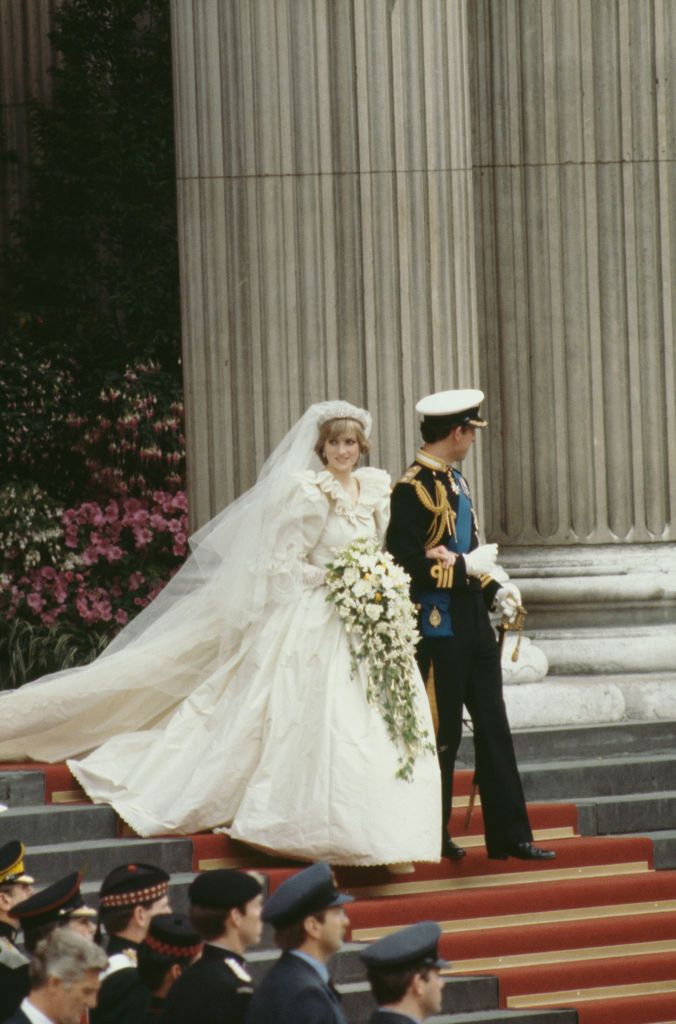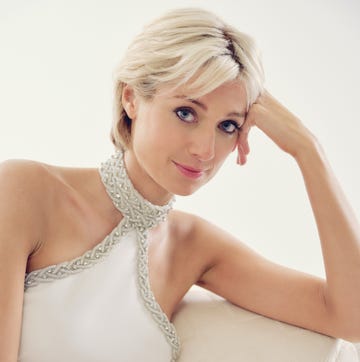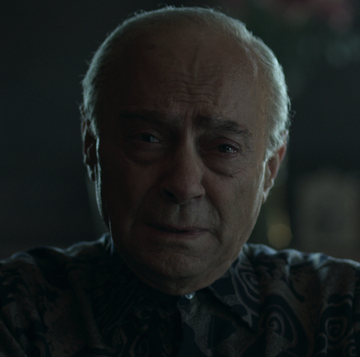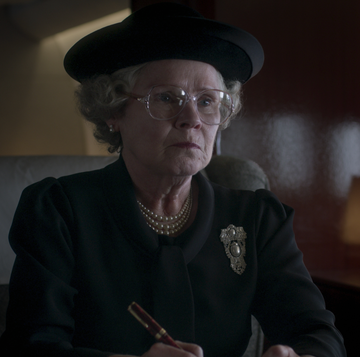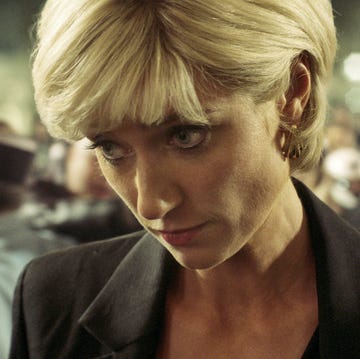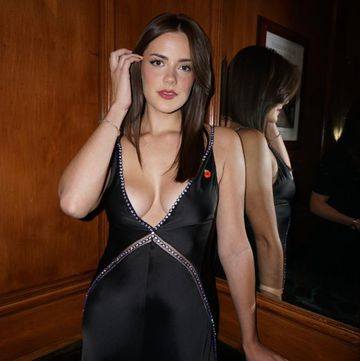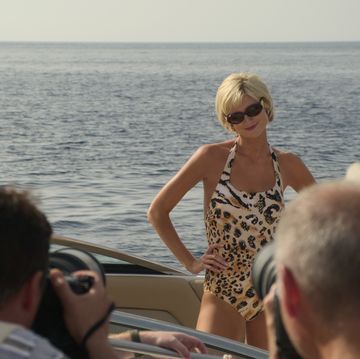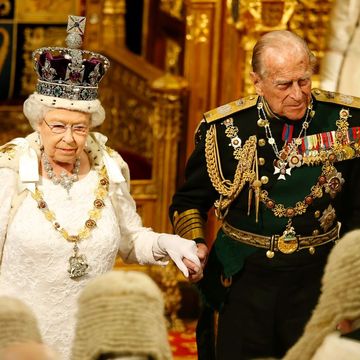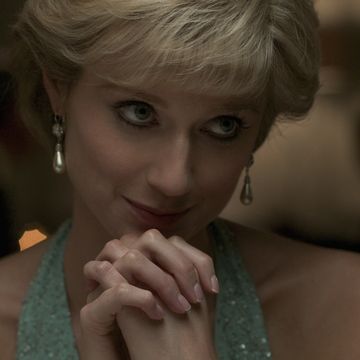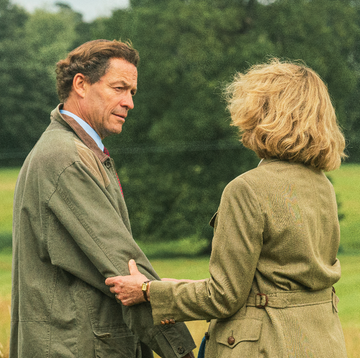“They killed that poor woman,” tuts my mum, talking to no one in particular about the passing of Princess Diana. The they is always vague. This would then be followed by “such a shame” in a Yoruba or a thick Cockney accent, depending on whatever mood she’s wearing that day. Now, with Diana’s appearance in Season 4 of Netflix's The Crown, it’s not strange to ask oneself what an upper-class white woman, a descendant of aristocrats, has in common with Black British mothers—women who only seem to taste reverence in musical odes laced with struggle, or in the run-up to landmark birthday parties.
Even though Diana wasn’t technically a member of the royal family at the time of her passing, such details are seemingly arbitrary to those Black British women who loved her, love her. It’s clearer to me now, as I approach the age in which my mum got married. I finally understand the almost spiritual connection that Black British mothers have to the late princess. There is a glaring gap in respect for Black British women, and it is in this chasm that I find the wooden slat bridge connecting Diana to people who exist and move in spaces the Windsors couldn’t imagine.
So I’m going to share my findings, and this is a story that starts, as many do, with falling in love.
—
It’s the 28th of July in 1991. A young woman sits on the edge of her bed and braces herself for the day ahead. A lot is about to change in a few hours: her last name, social standing, and—if we are to be frank about marriage—a large chunk of her identity. She’s about to follow her heart and wed a man who hasn’t quite won over her family; although, she is utterly adored by his. In the corner of the room are two staples in any Black British home with ties to colonialism: a picture of flowy-haired Jesus and one of a royal. That royal in question is a young Princess Diana beaming with her handsome prince. Ten years earlier, almost to the day, Diana was the bride. The photo serves as a talisman for the idea of fairy tales, love, and duty. But in reality, at the time my mother said her vows, the royal couple were hurtling toward separation.
Performing as the perfect bride is a task assigned even before the role of wife is assumed, let alone the role of a princess. Women’s lives are demarcated by so many of these roles, expected to perform them perfectly for an ever-shifting audience. Bride, wife, mother—and, of course, women are often victims of the Madonna-whore complex. My mum was six months pregnant with me when she finally walked down the aisle to meet my father. Except it wasn’t an aisle, insomuch as it was a traditional Yoruba ceremony, because it was clear that a white dress would be remiss and something like “purity” wasn’t a hindrance to a Black woman with a burgundy British passport. But even though she did not wear white on her wedding day, my mother still had that image in the room with her. Even Princess Diana, in her elaborate David and Elizabeth Emanuel gown, hands overflowing with equally virginal white flowers, was only the picture-perfect consort-ready bride, until she wasn’t.
We all know families have silent hierarchical orders. Within the Black British community, those hierarchies decide who receives repercussions for their actions and who gets off with grace and understanding. Maybe Black British mothers, my own included, understood the challenges that their royal best friend was having to handle on the micro-interpersonal level: an older husband with Peter Pan syndrome, infidelities, a cold mother-in-law, feeling like an outsider, just trying to be a good mum and make things work. And as noted by an aunt, “Remember, she cheated back. Good for her!” Diana’s small victories were enjoyed by our mothers who were too pious to stray out of revenge or much too proud to even utter martial issues in the first instance.
Diana represents a mode of being for so many Black British mothers. On her wedding day, she was naive, regal, beautiful; overflowing with untapped potential and radiance. But as time went on, the light dimmed under the weight of expectations, rules, order, duty, and trying to be everything for everyone.
Ask any Black Brits with sentiments toward Lady Di and it tends to all etch a similar line: She was “authentic,” she saw the “commoners” as “people.” And as my mother likes to remind us, she was in Brixton and Harlem with the Black people, shaking hands and hugging—none of which was protocol. The gilded cage of the palace, and maybe even just being constantly scrutinized, is not too dissimilar from the boxes Black British women, mothers especially, are placed in. They are markers against stereotype, or justification of—there is rarely a moment to authentically exist.
My parents, much like Charles and Diana, are two incredibly different people. My mother was raised on the cobbled streets of London’s East End in the ’60s by a close-knit white foster family, and my father is the favorite son in a Lagosian family headed by a matriarch. Mum was devastated by the death of her biological father after medical malpractice; Dad lost his when he was 13 and doesn’t remember crying about it. Regardless of station, opposite forces have always joined for the sake of marriage. Princess Diana is remarkable, because her situation isn’t. It was, and still is, reassuringly common.
What now, nearly 25 years since her untimely death? The love for Diana is so constant it extends to her children. Prince Harry, especially, who we have seen possess the same courage as his late mother, is lovingly called “my son” by my mother and aunts. To them, he is still the 12-year-old boy walking bravely behind his mother’s coffin. My mum has only three posts on Instagram, and one is specifically about Harry’s nuptials—with mention of her good friend Diana, of course. When he initially introduced his biracial partner, Meghan Markle, to the public, he asked for respect for both her as a person and for their privacy, as he had already lost someone so important to him due to the cruelties of mass curiosity.
His plea was somewhat pointless, however, as we’ve all seen how the media have treated his bride. Fortunately, he has been able to pick up where his mother was unable and forge something new on his own terms with the person he loves. My mum often notes that their union, and subsequent split from royalty, makes perfect cosmic sense. Harry is, after all, the son of a woman who “led with her heart and not a crowned head.”
One of my earliest memories is standing on a crowded street in Finchley, North London, as Diana’s flag-draped coffin speeds by in a black hearse. People weep and throw hundreds of flowers into the street. As a five-year-old, I am both perplexed and curious at the mass outpouring of grief. I dash a handful of crisps to feel a part of whatever is happening. I ask, “Mummy, why are you crying?” And without skipping a beat, she replies something along the lines of, “Because, baba, she was finally starting to live.”
Alegría Adedeji is an award shortlisted writer/director, with her webseries “There is rice at home” being heralded by both Edinburgh TV Festival’s “new talent” awards and the BBC Writer’s Room. She is co-founder of creative comms agency hue and is working on a commissioned series with BBC Studios.

